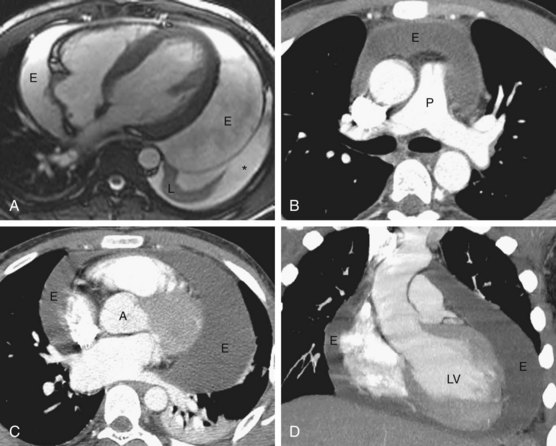CHAPTER 68 Pericardial Effusion
Pericardial effusion can occur from various causes, including infection, trauma, and systemic disease. Infectious causes of pericardial effusion are described in more detail in Chapter 69. This chapter focuses on pericardial effusion secondary to systemic disease.
ETIOLOGY AND PATHOPHYSIOLOGY
Pericardial effusion is an abnormal accumulation of fluid within the pericardial space. In the absence of acute inflammation, clinical symptoms depend on the size of the effusion, the rate of accumulation, and the ability of the pericardium to expand. Cardiac tamponade occurs when the intrapericardial pressure is high enough to impede cardiac filling. The pericardial fluid may be a transudate, an exudate, or hemorrhagic. Pericardial effusion is common in some diseases, such as chronic renal disease and heart failure. Pericardial effusion can occur in any collagen vascular disease, but is particularly common in patients with lupus erythematosus and rheumatoid arthritis (Fig. 68-1).


 FIGURE 68-1
FIGURE 68-1